Europe is a continent of incredible culinary diversity. From hearty Hungarian stews to delicate Portuguese pastries, the food reflects centuries of trade, migration, empire-building, and strong regional traditions. But what is the best food in Europe?
We can’t name just one. It depends on what you’re after: comfort, complexity, history, or indulgence. So instead of ranking a single “winner,” here are seven iconic dishes across Europe that stand out for their cultural significance, flavor, and global appeal.
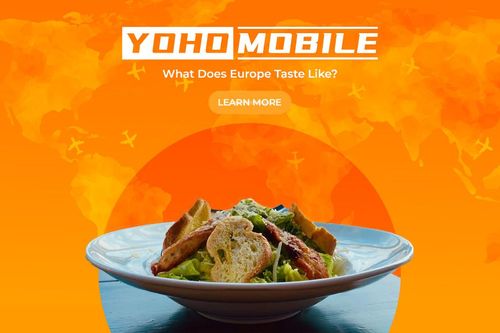
Best Food in Europe
Hungary: Goulash
Gulyás (as it’s called in Hungary) dates back to nomadic Magyar shepherds in the 9th century, who cooked meat over open fires in iron cauldrons. Over time, it evolved into a national dish symbolizing independence and rural pride, especially during the Austro-Hungarian era.
Goulash isn’t just “stew.” It uses Hungarian paprika—not the generic grocery store kind, but deep, smoky, sun-dried red pepper powder, often grown in Szeged or Kalocsa. Unlike other stews, it’s light on flour or thickeners, relying on slow-simmered richness.
Where to try it:
- Budapest: Get traditional gulyás at Kéhli Vendéglő or Hungarikum Bisztró.
- Rural Hungary: Csárdas (roadside inns) serve homemade versions, often with a side of pickled vegetables.
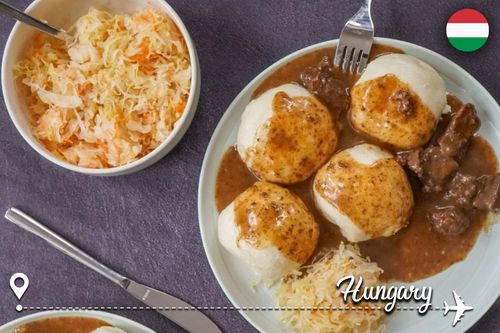
Flavor: Rich, savory, paprika-forward, and warm. It’s more robust than most Western beef stews.
England: Fish and Chips
Introduced by Sephardic Jewish immigrants in the 1600s, fried fish became popular with working-class Brits during the Industrial Revolution. By the 20th century, it was a national obsession—at one point, there were over 35,000 fish & chip shops in the UK.
Fresh white fish (cod or haddock), battered and fried to golden perfection. Served with thick-cut chips (not fries), malt vinegar, and sometimes mushy peas or tartar sauce.
Where to try it:
- Whitby: Try The Magpie Café, often named the best in the UK.
- London: Poppies or Golden Union.
- Brighton: Eat it beachside with seagulls circling.
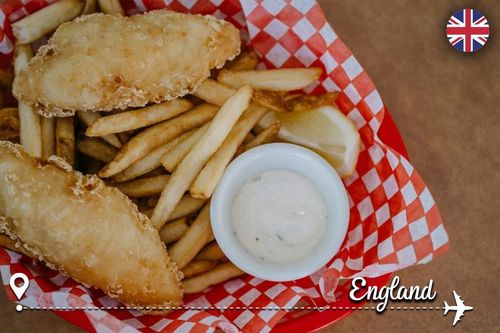
Flavor: Crispy on the outside, tender on the inside. Traditionally served with malt vinegar and mushy peas.
Portugal: Pastel de Nata
Born in the 18th century at Lisbon’s Jerónimos Monastery, monks created these tarts using leftover egg yolks (they used whites to starch robes). When the monastery closed, the recipe was sold to the nearby Fábrica de Pastéis de Belém, which still guards the original formula.
The contrast: crackly, flaky puff pastry shell meets a silky, warm, caramelized egg custard inside. Often sprinkled with cinnamon or powdered sugar. You can eat three without realizing it.
Where to try it:
- Lisbon: Pastéis de Belém (expect a line, but it’s worth it).
- Porto or Coimbra: Local bakeries put their own twist—some add citrus zest or burn the top slightly more.
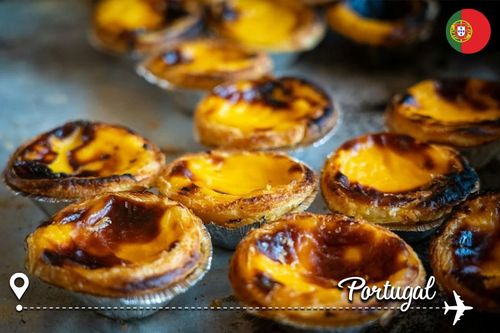
Flavor: Flaky pastry with warm, caramelized custard. Sweet, but not overly sugary.
You May Also Like: Packing Tips for A Trip to Europe
Italy: Carbonara
Carbonara emerged in post-WWII Rome, possibly as a mash-up between Italian technique and American rations (bacon and eggs). But today’s Roman carbonara has no cream, garlic, or onions—just quality ingredients handled perfectly.
Done right, the heat of the pasta emulsifies eggs and cheese into a creamy, silky sauce without ever curdling. The guanciale (cured pork jowl) adds depth that bacon can’t replicate. Pecorino Romano brings the bite.
Where to try it:
- Rome: Roscioli, Da Enzo al 29, or Armando al Pantheon.
- Off-the-beaten-path: Try in Trastevere or Testaccio, where chefs still argue over pepper-to-cheese ratio.
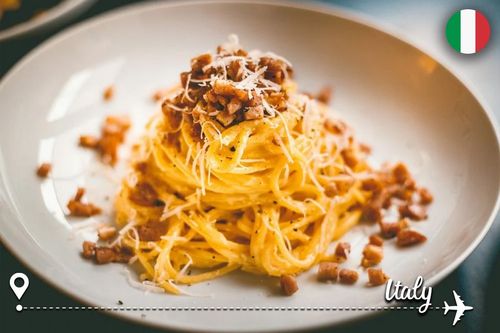
Flavor: Silky, salty, peppery, and rich with pork umami.
Germany: Currywurst
In 1949, Herta Heuwer, a Berliner, bartered with British soldiers for ketchup and curry powder, creating a postwar street snack that quickly took over Germany. Today, over 800 million currywursts are consumed yearly in Germany.
Simple ingredients, bold flavor. Sliced bratwurst topped with sweet-tangy curry ketchup and a dusting of yellow curry powder. Usually served in paper trays with a wooden fork.
Where to try it:
- Berlin: Try Curry 36 or Konnopke’s Imbiss.
- Hamburg: Locals also love it with a spicy twist.
- There’s an actual Currywurst Museum in Berlin (yes, seriously).
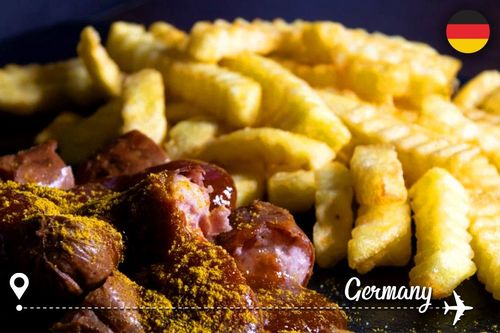
Flavor: Tangy ketchup meets curry spice on juicy sausage. Strange at first, addictive after.
Switzerland: Fondue
Though promoted as a national dish by the Swiss Cheese Union in the 1930s, fondue’s roots are rural, peasants melted cheese to stretch aging food in the winter months.
High-quality cheese (usually Gruyère and Emmental), melted with dry white wine and a touch of kirsch (cherry brandy). Served with chunks of crusty bread on long forks. The bubbling pot sits on a burner called a réchaud.
Where to try it:
- Lucerne or Zermatt: Cozy Alpine inns with mountain views.
- Geneva: Some restaurants offer tomato or mushroom fondue variations.
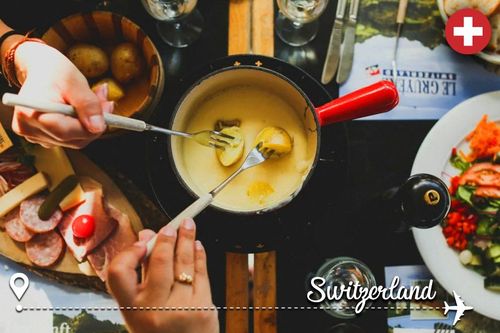
Flavor: Nutty, gooey, wine-scented cheese blend. Gruyère and Emmental are the stars.
Honorable Mention: Spain’s Paella
Paella began as a humble field dish for Valencian farmers, cooked over wood fires in shallow pans with whatever ingredients were available—often rabbit, snails, and beans. Over time, seafood versions grew popular in coastal cities.
The socarrat—the crispy layer of toasted rice at the bottom. Saffron and smoked paprika give it fragrance and depth. It’s not meant to be soupy or stirred like risotto.
Where to try it:
- Valencia: Try La Pepica or Casa Carmela (they cook over orange wood fires).
- Barcelona: Avoid touristy spots on Las Ramblas; head to the Born or Barceloneta neighborhoods.
We covered this in detail in our full Paella guide.
Final Thought: You Can’t Pick One. But You Can Try Them All.
Europe’s best food isn’t about one dish—it’s about regional pride, storytelling, and connection through taste. Whether you’re exploring street food in Berlin or desserts in Lisbon, each bite brings you closer to understanding a country’s identity.
Travel tip: Want to explore Europe’s culinary gems without the stress of roaming charges or unreliable Wi-Fi? Stay connected while you travel—try Yoho Mobile’s free eSIM trial and get instant access to mobile data in over most countries. No SIM card, no contracts—just a quick setup and you’re online in minutes. If you want to get your eSIM plan afterwards, use the code YOHO12 at checkout for a 12% discount!
Bon appétit and bon voyage!
